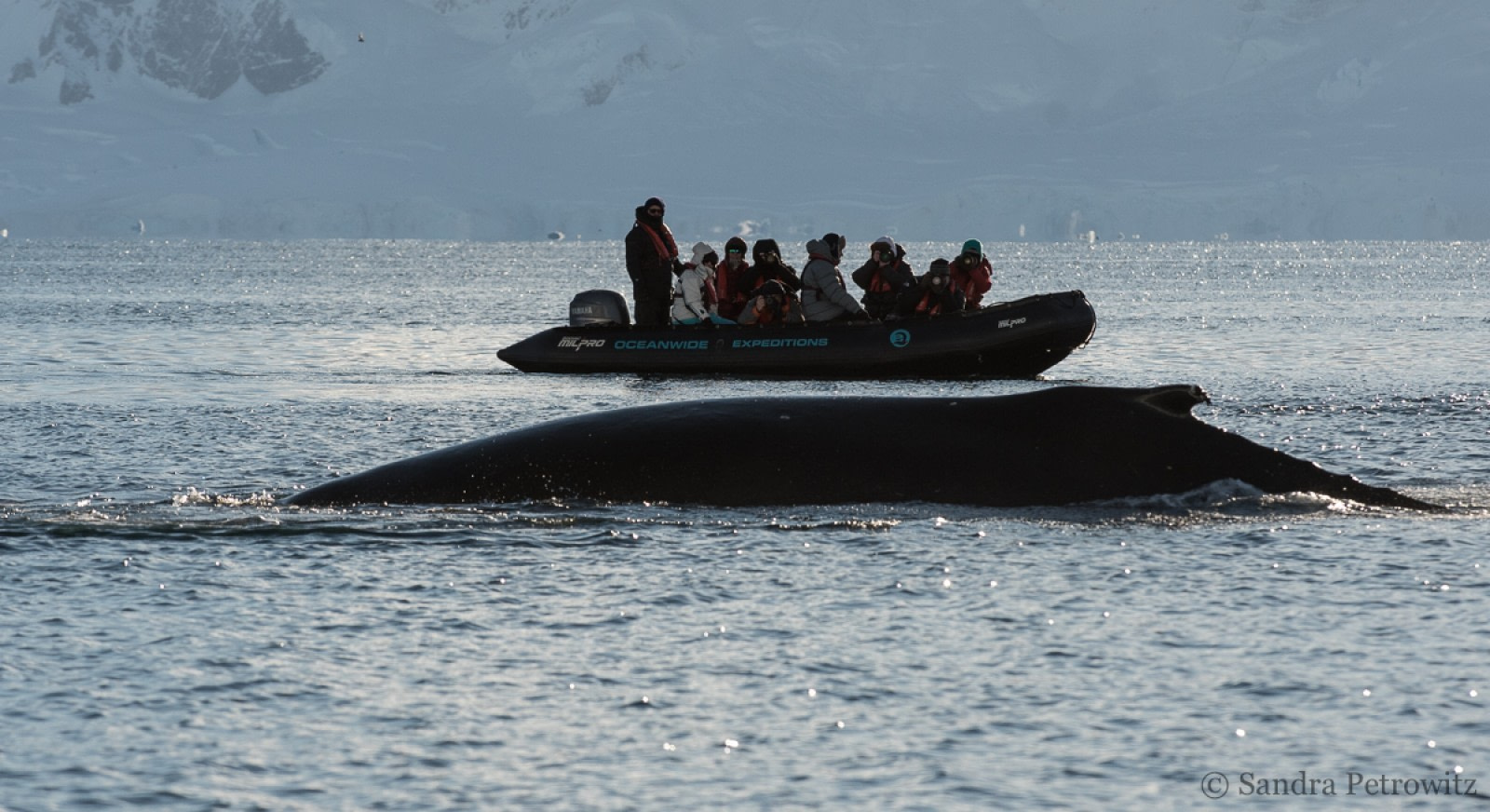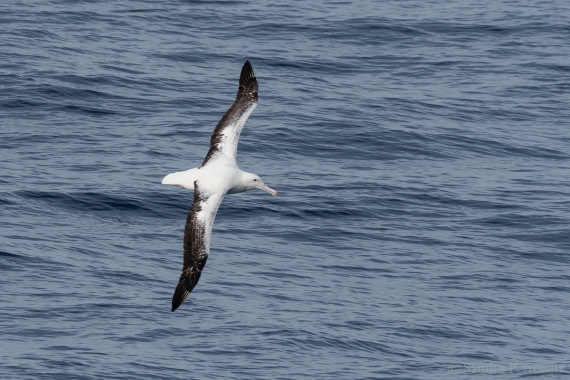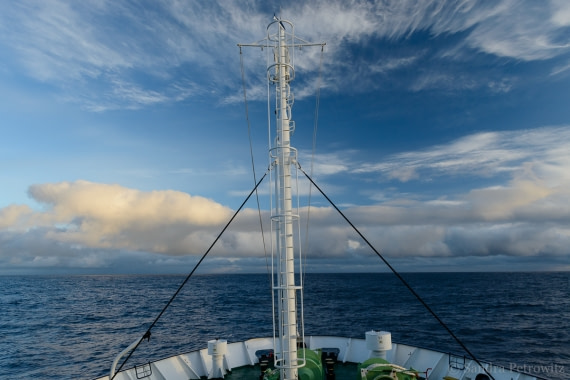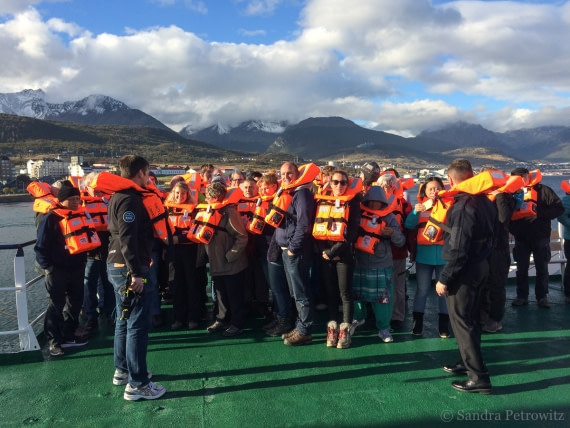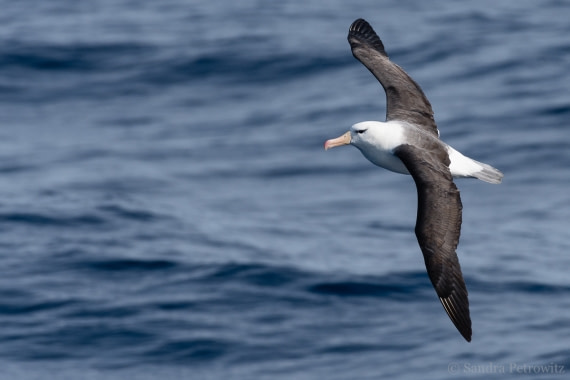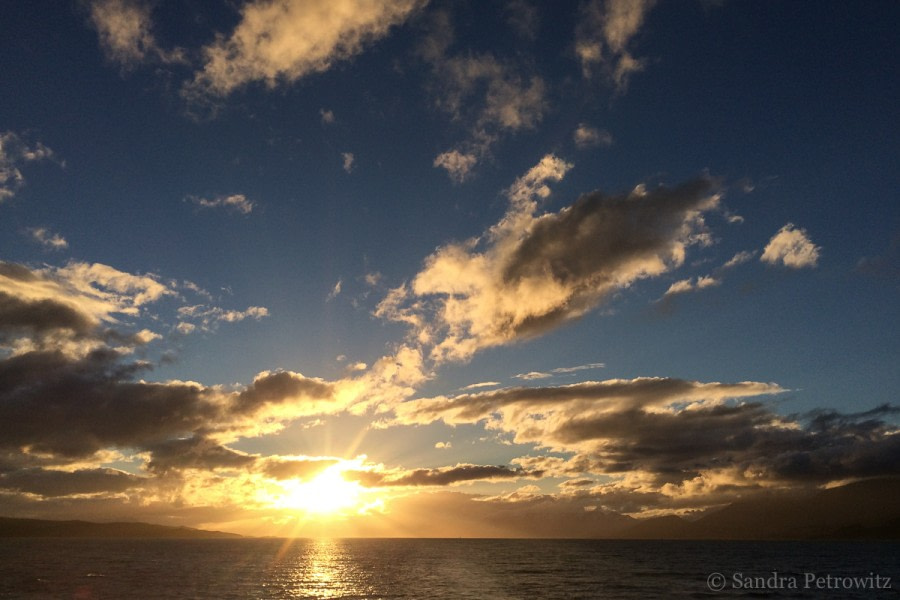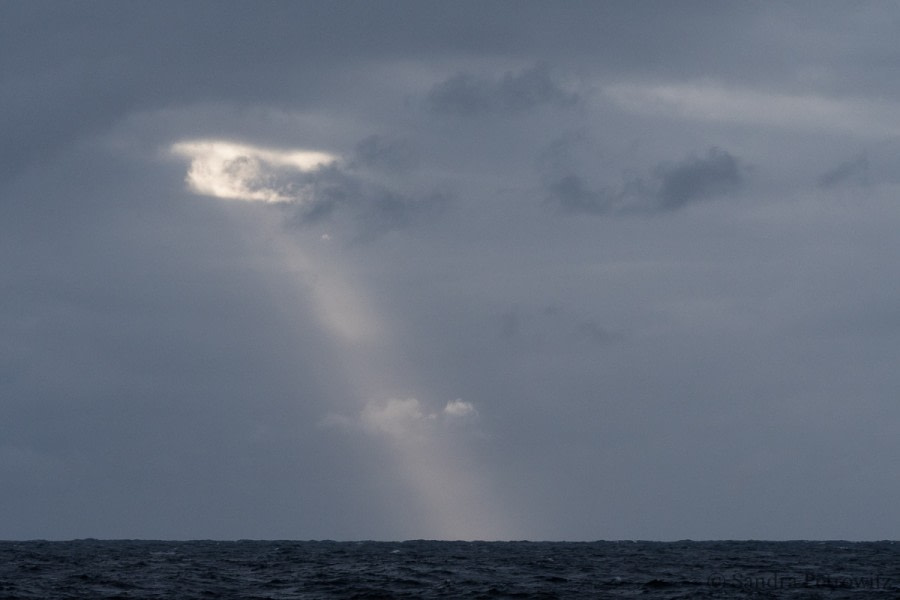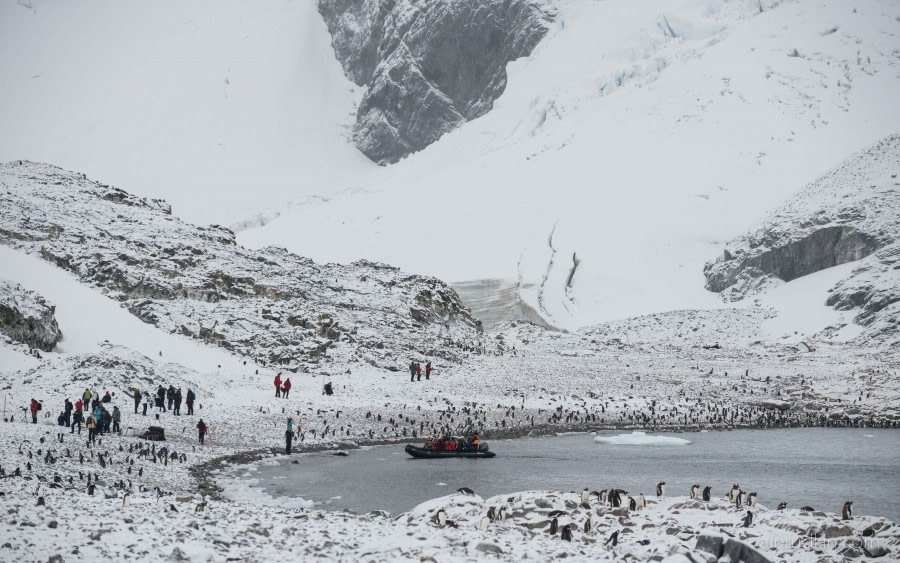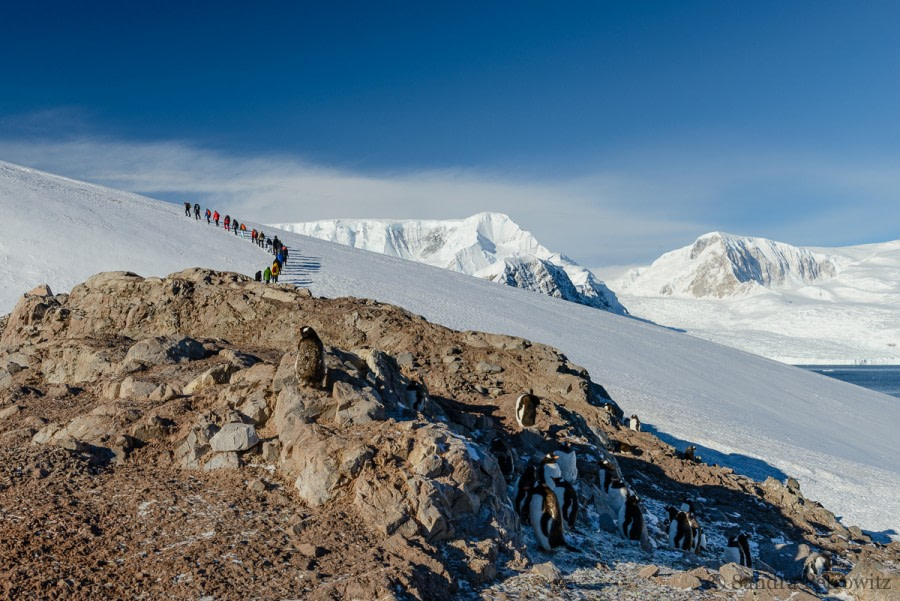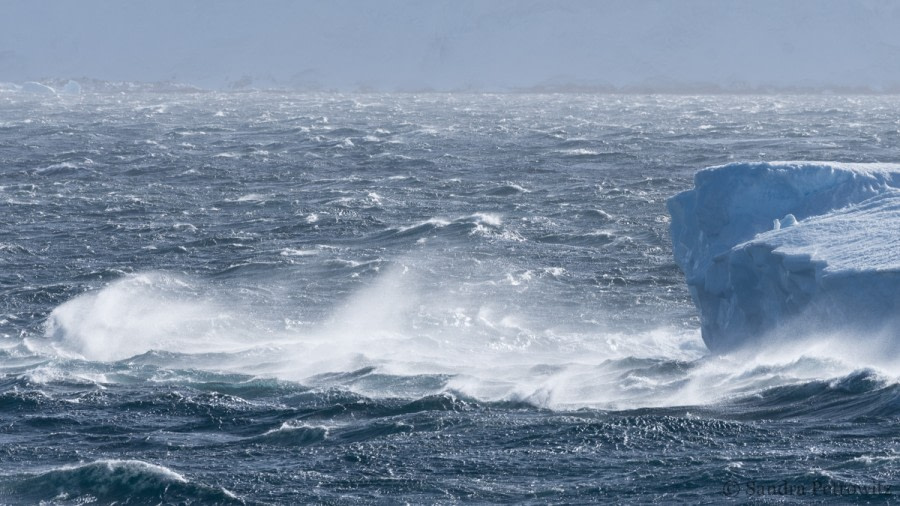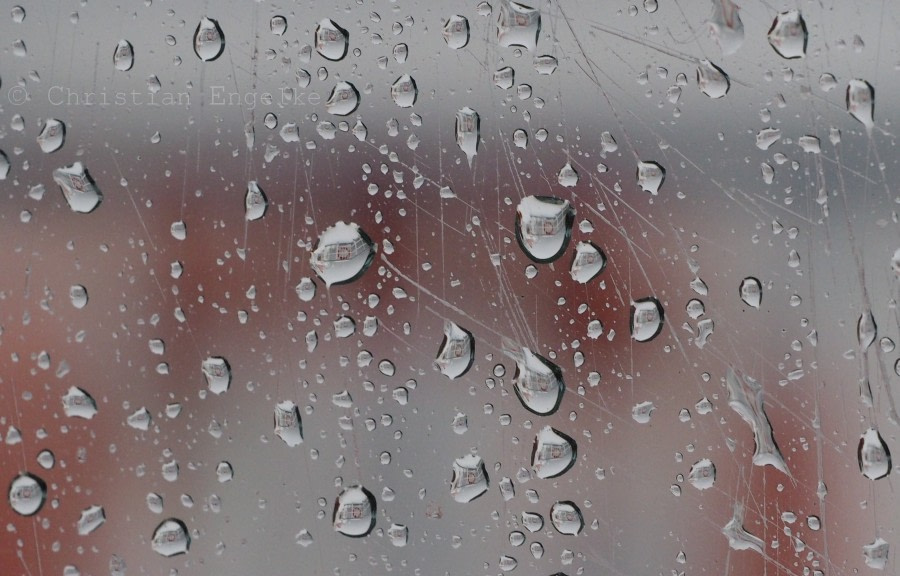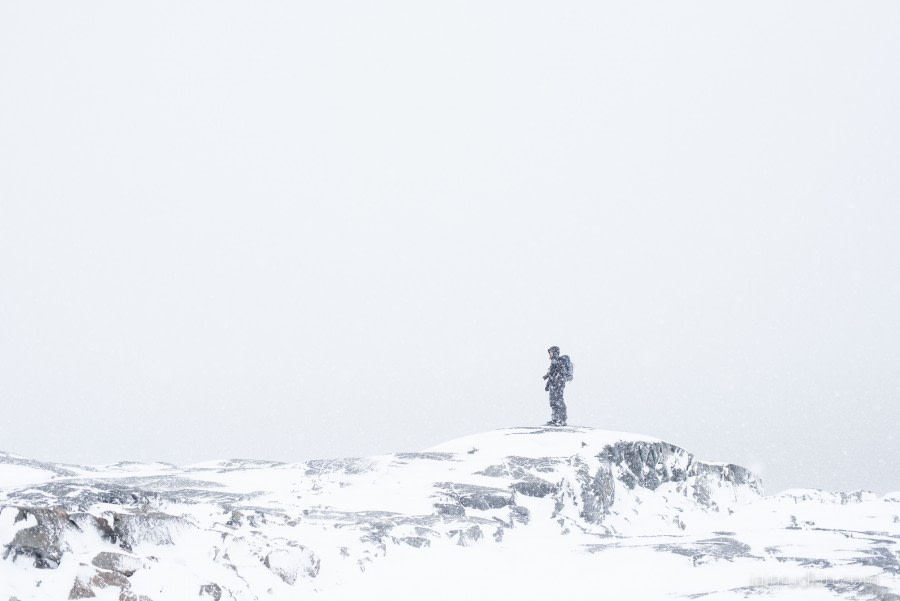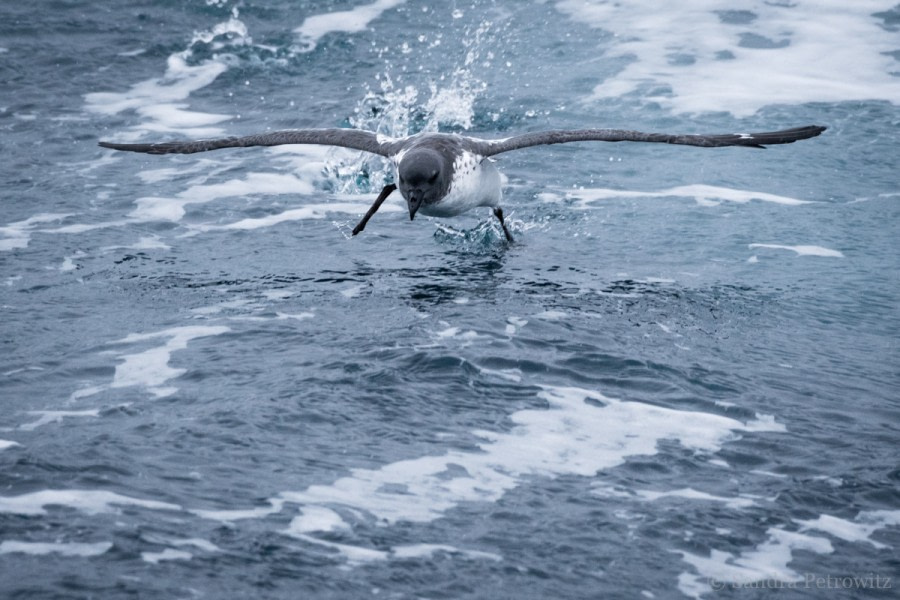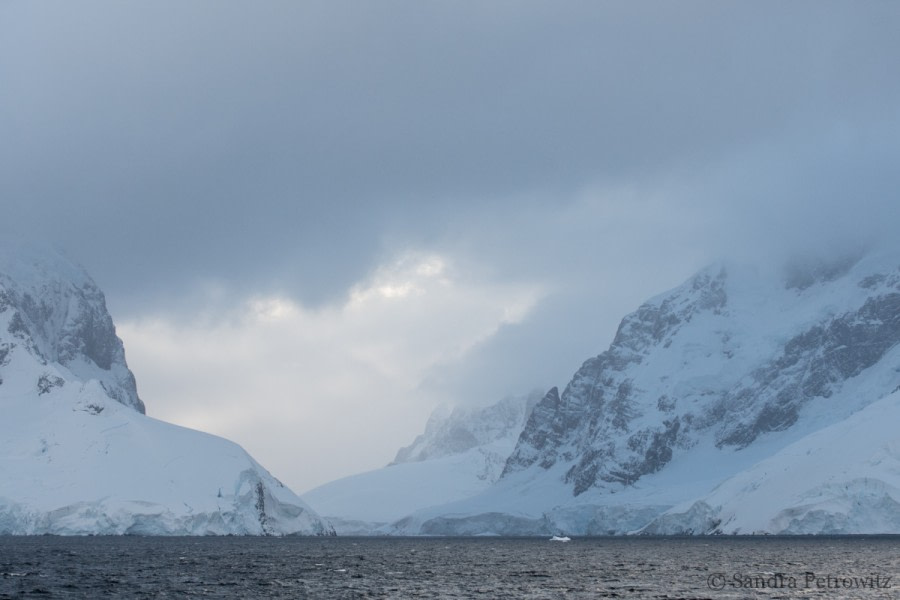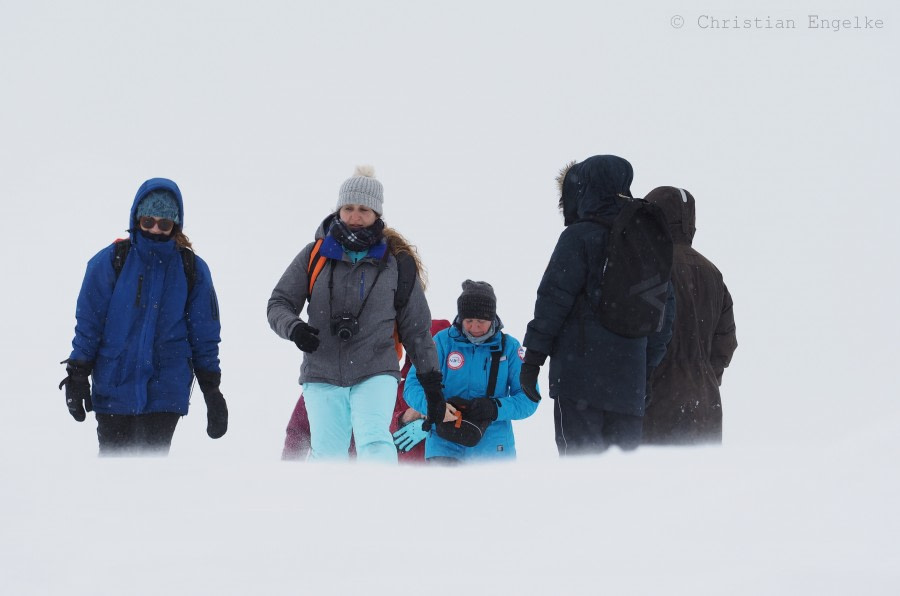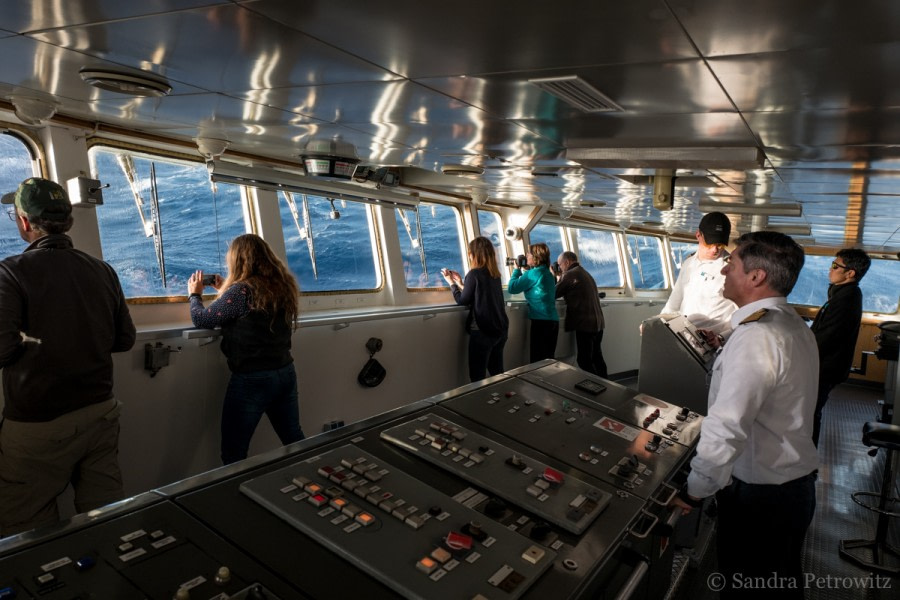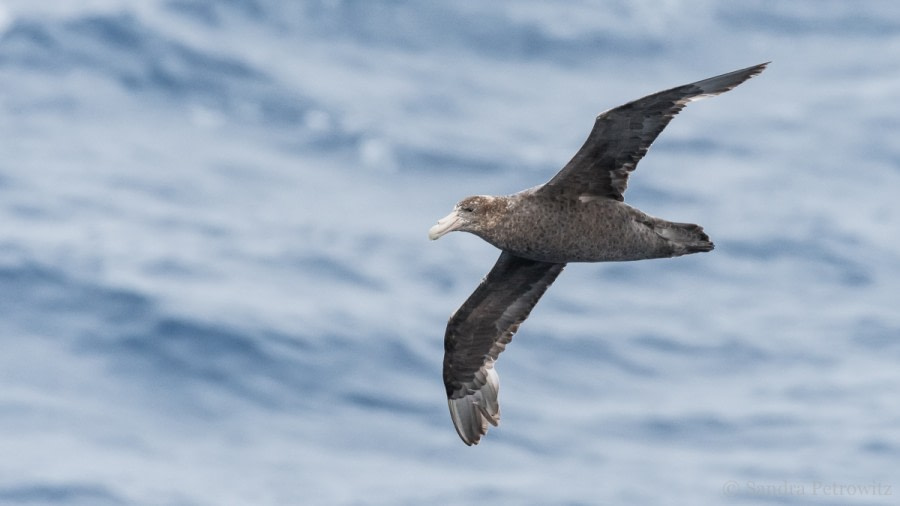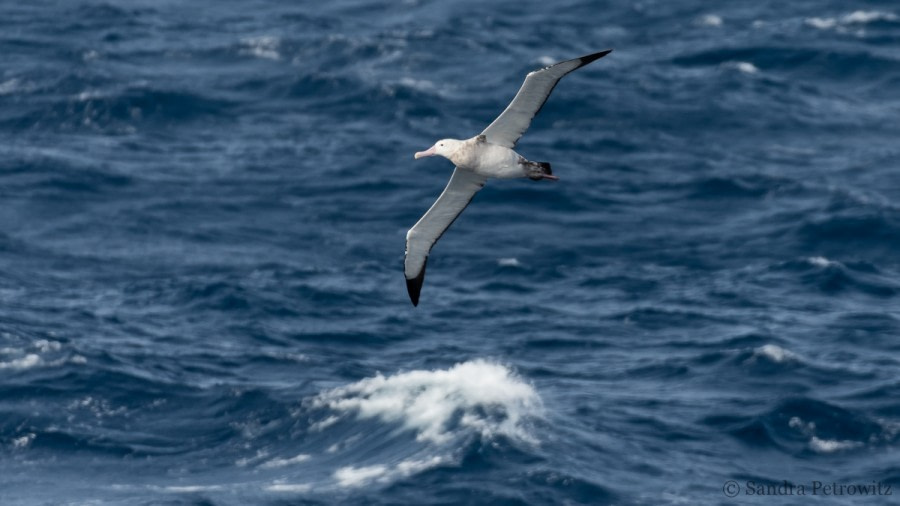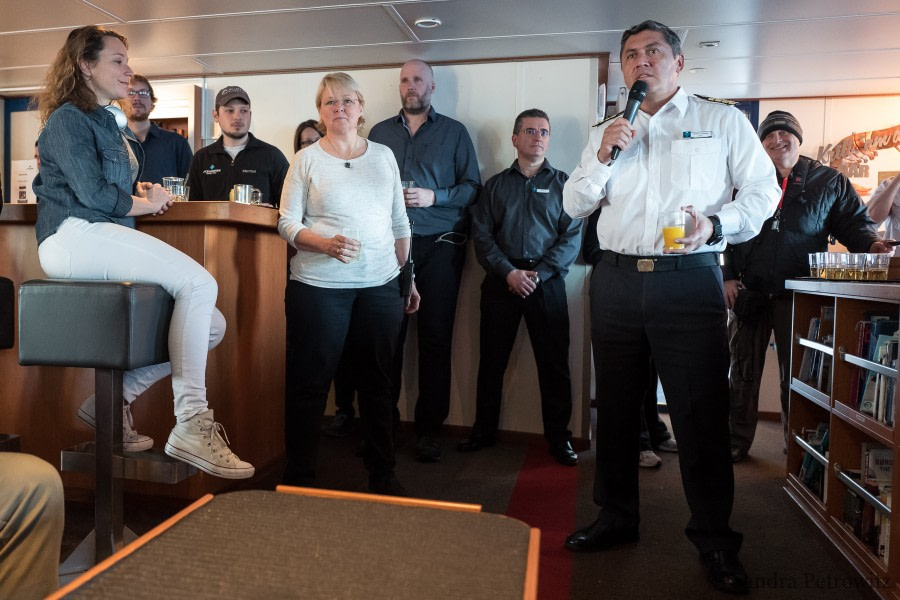| Date: | 14.03.2018 |
| Position: | 54°48.6‘S, 068°17‘W |
| Wind: | SW 4 |
| Weather: | cloudy |
| Air Temperature: | +7 |
On this fine afternoon at the end of the world (Fin del Mundo), on a very typical day for Ushuaia with the weather changing every five minutes from sunshine to drizzle, from cloudy skies to clear patches, we had made our way to the pier. From around 4pm, boarding Ortelius started, and we were soon checked in by our Hotel Manager and his assistant, Sebastian and Sava. Our luggage had already found its way into our cabins, so we had some free time to get unpacked and settle in. Soon after, we began exploring our new home; perhaps the most important place to find was the Bar on Deck 6, where coffee/tea can be accessed 24/7, and the way to the outside decks for the view of wildlife and landscape. At 5pm we gathered in the Lecture Room on Deck 3 for a mandatory briefing by Expedition Leader Lynn. She welcomed us on board and introduced Third Officer Warren, who gave an all-important Safety Briefing and explained the procedures of the Lifeboat Drill. Now we were aware of what we should do if we see a fire or a man overboard, and knew precisely what to grab and where to go in the event of the ship’s general alarm going off. Seven short and one long blast called us (warmly dressed and equipped with our big orange lifejackets) to the Bar, which doubles as our muster station. Once we were all there and accounted for, the ‘abandon ship’ signal was sounded, and we filed outside in orderly fashion and gathered next to the lifeboats to complete the drill. Afterwards we were free to continue our explorations of the ship, or come out on deck with our cameras to watch Ortelius’ departure from Ushuaia. We waved our goodbyes to this charming city and headed down the Beagle Channel towards the open ocean. Before dinner we once more gathered in the Lounge/Bar on Deck 6 in order to meet key crew/staff and learn about ship routine during our voyage. Hotel Manager Sebastian shared useful information about mealtimes, Internet/Webmail access and treating the toilets nicely. He was followed by Expedition Leader Lynn who introduced Captain Ernesto – the person who will get us there and back again safely – and then handed over to her team of staff for self-introductions. We raised a glass of bubbly (or orange juice) to the success of our voyage and then it was time for our first dinner aboard. After dinner, ship’s doctor Jacco was available in the hospital to hand out seasickness medication and valuable advice. The forecast for crossing the Drake did not look too bad, yet we were wary. A stroll on deck, a cup of tea or something stronger, one last look at the wonderful starry sky above the ship, and then most of us fell into bed after a busy and exciting day – hoping to be fast asleep before we reached open seas.
